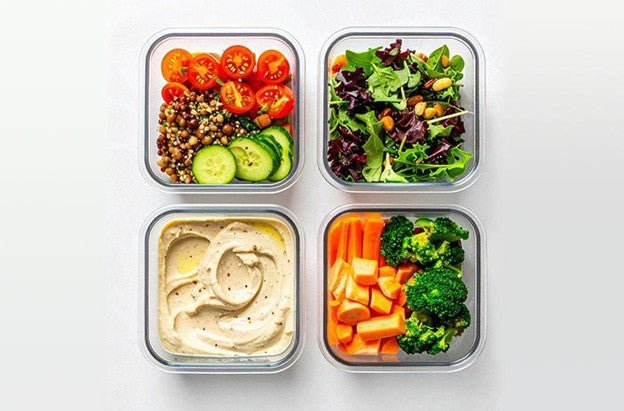Razab - July 2024
Types of Japanese knives - A Must Read Guide For Every To-Be-Chef

Welcome to our latest blog where we talk about the amazing world of types of Japanese knives. These tools are not just for cutting. They are a mix of precision, tradition, and versatility. Every chef or cooking lover knows that having the right knife can change the way you cook. That is why Japanese knives are so special. They bring a blend of history and sharpness that you can’t find anywhere else.
Now you might be thinking, "Why Japanese knives?" Let me take you through their importance and what makes them a must have in any kitchen. Whether you are slicing delicate fish for sushi or chopping veggies, a Japanese knife can make your job smoother and more enjoyable. So are you ready to learn which Japanese knife is perfect for you? Keep reading and become an expert on different types of Japanese knives available for your kitchen needs!
Meet Gyuto Knife Which Can Be Your Reliable Partner In Kitchen

When we talk about types of Japanese chef knives, the Gyuto knife always stands out. It's like the Japanese version of a Western chef's knife but with some cool differences! People love it as you can use it for almost anything in the kitchen. This knife does the slicing, dicing, chopping hence everything. It is super versatile making it the top choice for chefs and home cooks alike.
Why Gyuto?
What is great about the Gyuto knife is how it combines the best of both worlds. It has a sharpness typical of Japanese knives and the versatility of Western knives. It is perfect for cutting meats, fish, veggies... you name it! Taking Care Of Your Gyuto Knife Always Clean It With Care After Each Use. Use A Proper Knife Sharpener To Maintain Its Edge. Store It Safely To Avoid Any Damage.
Taking Care Of Your Gyuto Knife
- Always Clean It With Care After Each Use.
- Use A Proper Knife Sharpener To Maintain Its Edge.
- Store It Safely To Avoid Any Damage.
1. What Makes A Gyuto Knife Different From A Western Chef's Knife?
The Gyuto is lighter and sharper making precise cuts easier.
2. Can A Gyuto Knife Handle All Kitchen Tasks?
Absolutely! From chopping vegetables to slicing meat it is incredibly versatile.
3. How Do I Sharpen A Gyuto Knife?
Use whetstone for best results. This will keep it razor sharp. Looking for versatile knife? Check out our top Gyuto picks!
Discover Santoku Knife: Master Of Three Virtues!

If you diving into the world of types of Japanese kitchen knives you can't overlook Santoku knife. Its name means three virtues or three uses which perfectly captures this knife's versatility. The Santoku fantastic blend between cleaver and chef's knife designed for those who want one tool that does it all.
Why Santoku?
This knife is not too big and not too small and just right for handling vegetables or fish and meat with ease. Its design allows for quick and sharp cuts and can be your go to for almost every task in kitchen.
Taking Care Of Your Santoku Knife
- Wash It By Hand And Dry It Immediately To Prevent Rust.
- Sharpen It Regularly To Maintain Fine Edge.
- Store It In Knife Block Or Magnetic Strip To Avoid Edge Damage.
1. What Are The 'Three Virtues' Of Santoku Knife?
They refer to slicing or dicing and mincing. The Santoku excels at all three.
2. Is a Santoku knife good for cutting meat?
Yes it can handle meat beautifully making it a versatile choice for various dishes.
3. What's the best way to store a Santoku knife?
Keep it in a dry place out of reach of children ideally in a knife block or on a magnetic knife holder.
Discover the versatility of Santoku knives in our curated collection!
Learn more about different types of Japanese cooking knives with our selection at Razab. Whether you chopping veggies, slicing fish or cutting meat the Santoku knife could be your new favorite kitchen companion.
Meet Nakiri Knife: Veggie Lover's Dream Tool!

Dive into the world of types of Japanese kitchen knives and you will find Nakiri knife. A true specialist in vegetable preparation. Its distinct rectangular shape makes it stand out in knife block and in performance. Designed primarily for veggies this knife offers unparalleled precision in chopping, slicing and dicing.
Why Nakiri?
The Nakiri flat blade is perfect for cutting straight down through vegetables without need for horizontal pulling or pushing. This makes it ideal for quick efficient prep work without bruising or tearing delicate produce.
Caring for Your Nakiri Knife
- Regularly sharpen blade to keep it razor-sharp.
- Clean and dry immediately after use to prevent rust.
- Store in safe place like knife block or drawer with knife organizer.
1. Can I use a Nakiri knife for meat?
While it is optimized for vegetables it is not recommended for cutting meat due to its specific design and edge.
2. How are Usuba knives and Nakiri knife different from Usuba each other?
The Nakiri is a versatile and high volume cutter that is to mince vegetables including those with thicker skins. However the Usuba is a Japanese vegetable knife that is more delicate, making it ideal for making fine and delicate slices and decorative cutting in the kitchen.
3. How should I sharpen a Nakiri knife?
Use whetstone for sharpening. Start with coarser grit and finish with finer grit to ensure a smooth and sharp edge.
Enhance your veggie prep with our favorite Nakiri knives!
Discover the joy of preparing beautiful dishes with precision and ease. Whether you a seasoned chef or just starting out Nakiri could become your go-to for vegetable preparation!
Explore Power Of Deba Knife Which Is The Butchery Expert

When talking about different types of Japanese knives Deba stands out for its robust heft and specialized use in butchery. This heavy duty knife is traditionally used by chefs for filleting fish and cutting through small bones making it a critical tool for meat processing tasks.
Why Deba?
The Deba knife thick and heavy blade designed to handle more challenging tasks like filleting fish and dealing with poultry. Its sharp edge and durable build allow for precision cuts without damaging meat or fish.
Caring for Your Deba Knife
- Sharpen the blade regularly to maintain its effectiveness.
- Clean the knife immediately after use to prevent stains and rust.
- Store in a safe and dry place to protect the blade's integrity.
1. Is a Deba knife suitable for cutting through large bones?
No it is designed for small bones and joints. Using it on large bones could damage the blade.
2. What is the best way to sharpen a Deba knife?
Use whetstone tailored for Japanese knives. Start with rough grit for reshaping. Then finish with finer grit for sharpening.
3. Can a Deba knife be used for vegetables?
Primarily Deba knife is for meats and fish. Yes it can be used for vegetables. Not to overlook that it might not be as exact as a knife designed especially for that use.
Whether a skilled chef or a passionate home cook, Deba knives will enable you to easily and precisely handle the most difficult culinary chores.
Discover Yanagiba Knife Which Is Usually A Sushi Master's Choice

So amongst two types of Japanese chef knives Yanagiba stands out for its specialized role in sushi as well as sashimi preparation. It is for its long and slender blade the Yanagiba knife is essential for achieving the delicate precision required to slice raw fish and seafood perfectly.
Why Yanagiba?
Yanagiba knife design lets one pull cuts and assist in producing neat and smooth slices that maintain fish texture and integrity. Sushi chefs love this accuracy since it allows them to create perfectly cut and aesthetically beautiful sashimi.
Caring for Your Yanagiba Knife
- Use a fine grit whetstone and sharpen it regularly to maintain its razor sharp edge.
- Once you clean it immediately dry the knife after use to prevent corrosion and even after washing it.
- Store in knife block or sheath to protect blade.
1. Can I use Yanagiba knife for tasks other than sushi?
While it is primarily for slicing the fish you may also use it for other delicate cutting tasks that require precision.
2. How do I maintain the sharpness of a Yanagiba knife?
Regular sharpening with high quality whetstone essential. Follow the proper angle and technique to ensure the edge remains sharp.

What Is The Difference Between Yanagiba And Sujihiki Knives?

The Yanagiba is primarily for raw fish and has more curved edge while Sujihiki is more versatile and suitable for slicing both raw and cooked proteins and generally has double bevel.
Why Japanese Knives Rock?
So we just went through a bunch of different Japanese knives yeah? Each one got something special. The Gyuto? Jack of all trades. The Santoku is your go to for slicing, dicing and all that good stuff. Nakiri? Veggie cutting like a boss. Deba is all about fish and meat. The real heavy duty. And that Yanagiba is must have if you are into making sushi that looks as good as it tastes.
Using these knives is not just about cutting stuff. It is about doing it with style and making cooking a whole lot easier. Whether you cooking at home or in a fancy restaurant having the right knife makes all the difference. It's like better your tools better your food turns out. Ready to upgrade your kitchen? Explore Razab’s Japanese Chef knife today! Think it is time for better tools? Check out our awesome Japanese knives at Razab. Trust me with a right knife you will feel like a pro chef in no time.




